1840's Martin & Coupa Spanish Style Guitar
The "Spanish" Martin is a distinct style with specific features, including a line though the middle of the sides, a delicate tapered heel, fan bracing, and a Spanish Foot.
Formerly of the Steve Howe Collection.
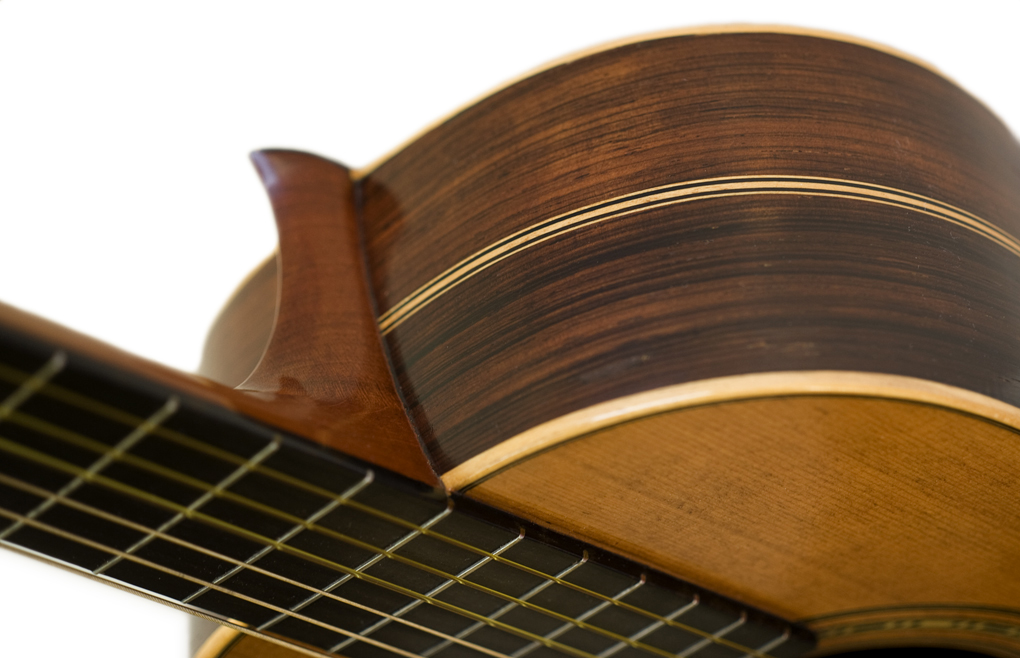
This example epitomizes the Martin guitar at a critical point in it's evolution. The "Spanish" Martin is a distinct style with specific features clearly
showing Martin's awareness of the pre-Torres guitar of Spain. This guitar retains features of Martin's earliest Viennese influenced guitars,
including the "Stauffer Style" headstock with "Vienna Gears", while adding features of the Spanish guitar.
This fine example of perhaps the earliest of Martin's versions of a Spanish guitar has many prototypical Spanish features: cedar neck with
elegantly curved Spanish heel, Spanish style interior false foot, tie style bridge with ivory inset, fan braces, two piece rosewood sides with simple
lengthwise center strip dividing the two pieces, and both bindings and simple back strip with straight lines made of holly extending into the heel.
This guitar is also an early example of features which would become hallmarks of Martin design for years to come, such as the ebony pyramid style
bridge, and Martin's version of the Spanish body shape with a smaller upper bout than the Viennese influenced guitars.
This could be the earliest Martin we've seen to have solid Brazilian rosewood backs and sides in place of a back of rosewood veneer.
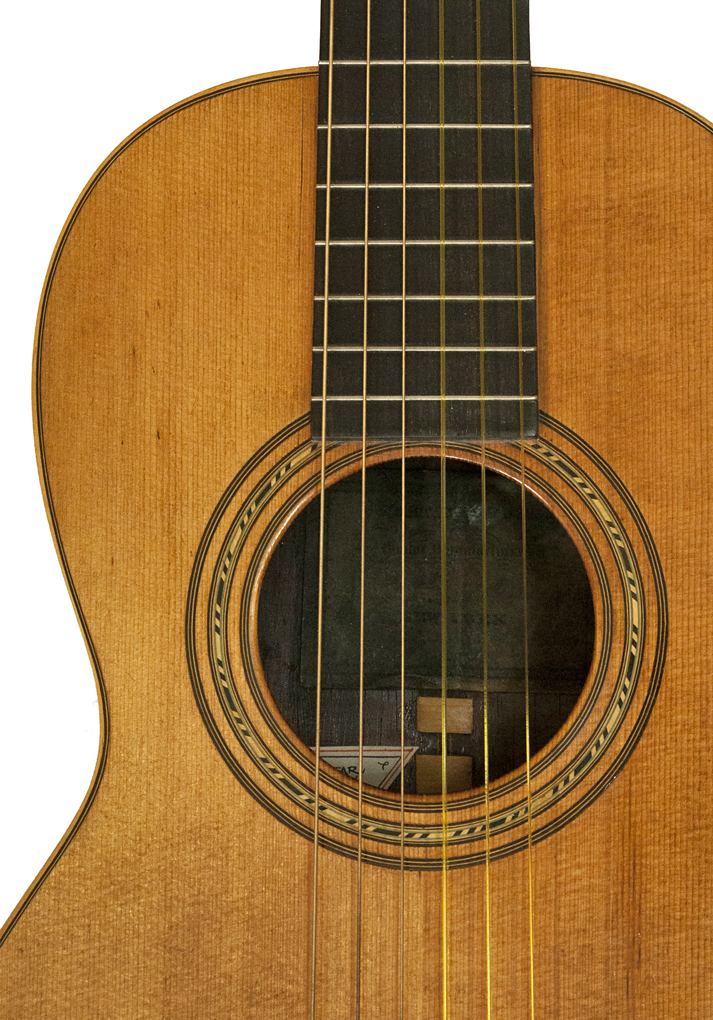
The importance of this particular example as a transitional guitar with the head design of the Viennese Staufer, the fan bracing, cedar neck with Spanish heel, interior foot, tied bridge, and two-piece sides of a pre-Torres Spanish guitar, and Martin's new body shape and pyramid bridge design, is described by Evans:
"This instrument has a combination of features that is, to our knowledge, unique on a Martin guitar. The head design is similar to that used by Martin in the 1830's, with the tuning machines concealed under a metal plate and buttons on one side, after the manner of Staffer. The body, however, does not have the Staufer-inspired, wasp-waisted shape of the 1830's, but is closer to the mature Martin style of twenty years later. The shape suggests strongly that Marin had had the opportunity to examine a Spanish-made guitar of about 1840, and was experimenting with Spanish-style construction."
"This supposition is reinforced by the presence of Spanish features such as we have seen on no other Martin guitar, including simple fan bracing with three radiating struts, and a Spanish head and slipper foot into which the sides are slotted. The division of the rosewood sides by a narrow decorative hardwood strip is another feature borrowed from the nineteenth-century Spanish guitars. The presence of this strip weakens the sides; to give them strength, Martin fitted several vertical braces int which the cross struts of the top and back are notched, framing up the body."
"The design of the bridge is very modern for it's date. In shape it conforms to the "pyramid" bridge pattern used by Martin throughout the latter half of the nineteenth century and the first quarter of the twentieth. But this is one of the very few nineteenth-century Martin guitars to be made with a tied rather than a pin bridge. The strings pass over a broad, backward sloping ivory saddle-piece before being secured at the rear of the bridge."
"This guitar proves that C.F. Martin was one of the few makers outside Spain in the early nineteenth century to be aware of the possibility of fan strutting on the guitar, and that he experimented with it before developing his own famous X-bracing system. It shows the American gut-stringed guitar, the ancestor of the steel-sting guitar, at a critical point of it's evolution, about to break away from the diverse European influences to which it owed it's beginnings."
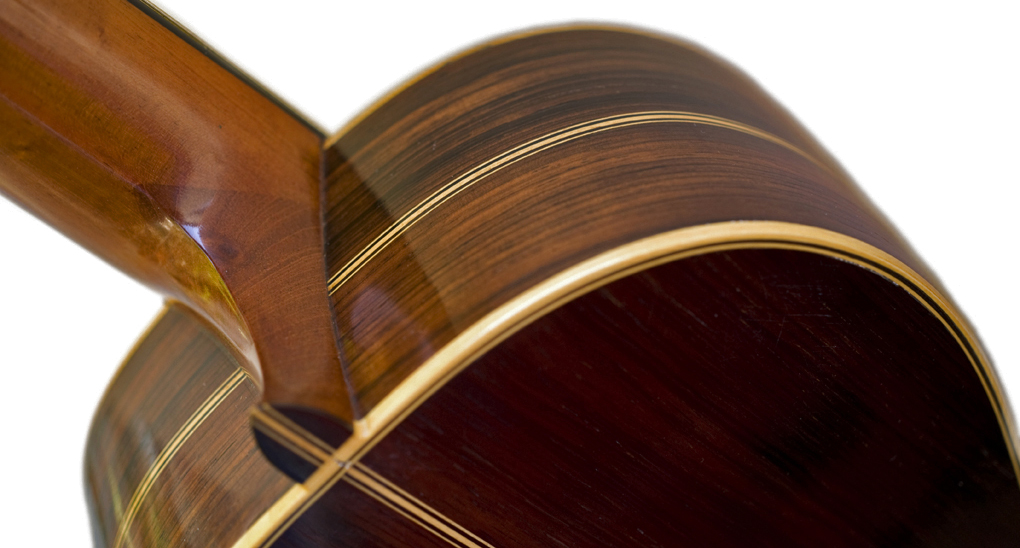
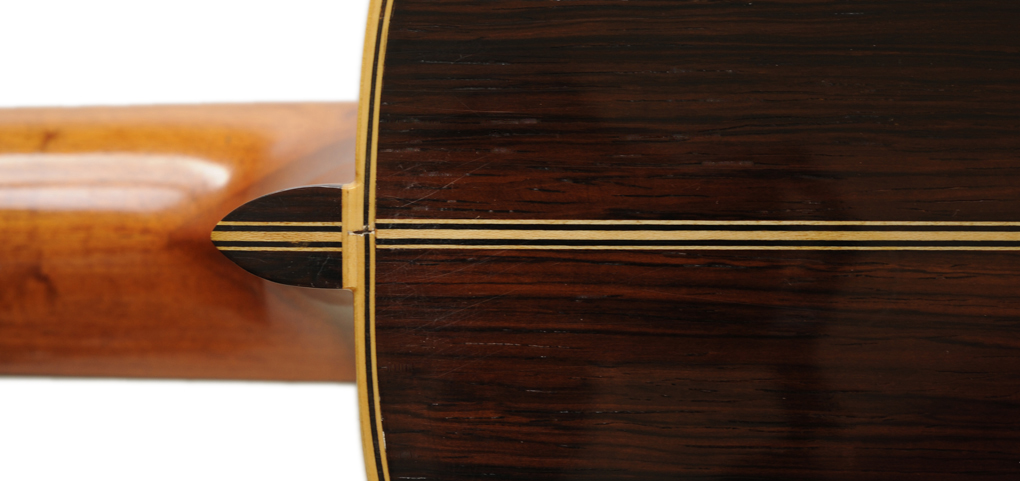
The unique headstock design of this example further reinforces the transitional nature of this guitar. The Staufer style head with Viennese gears combined with this style of attachment to the neck, with the volute common on Martins to this day, is quite the surprise, never seen on another Martin. All other Viennese gears seen on Martin guitars to date have had metal tuning buttons.
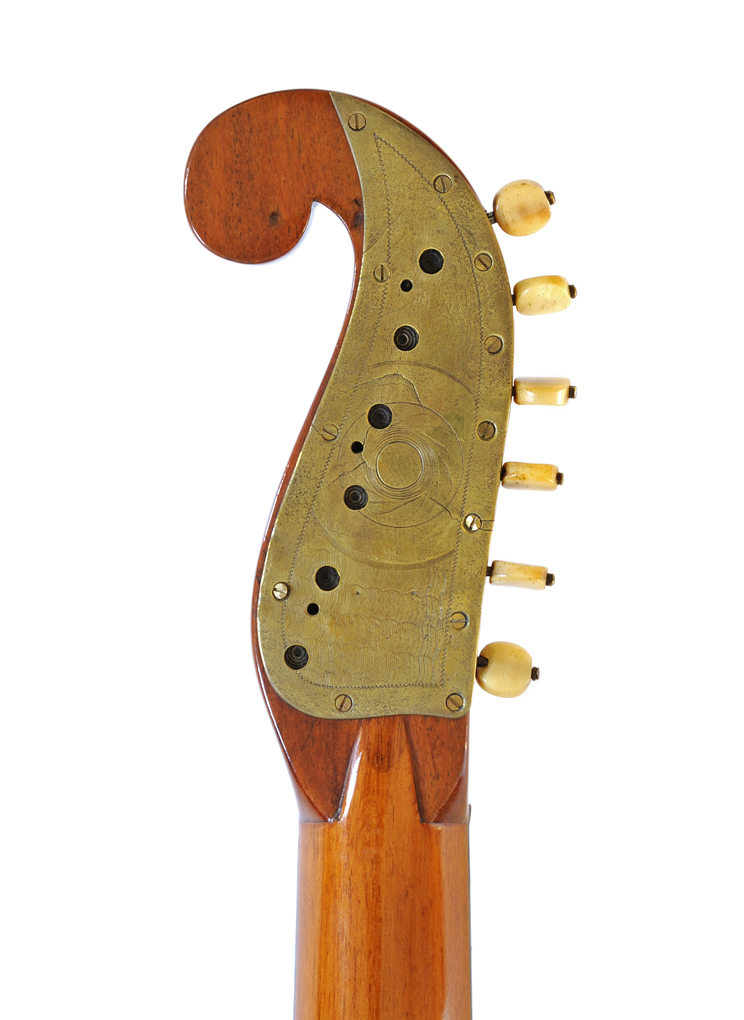
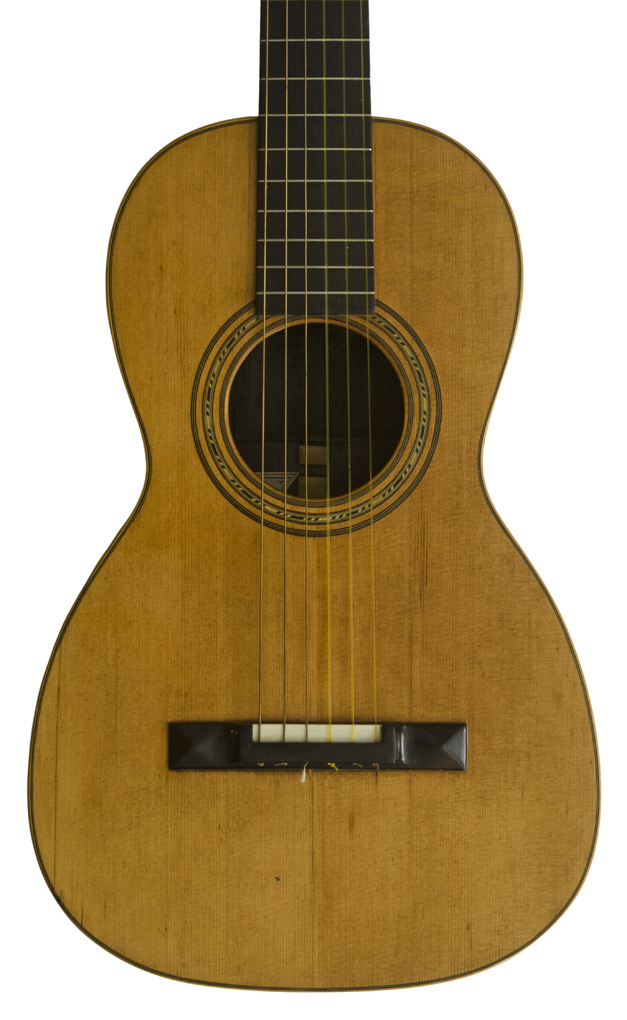


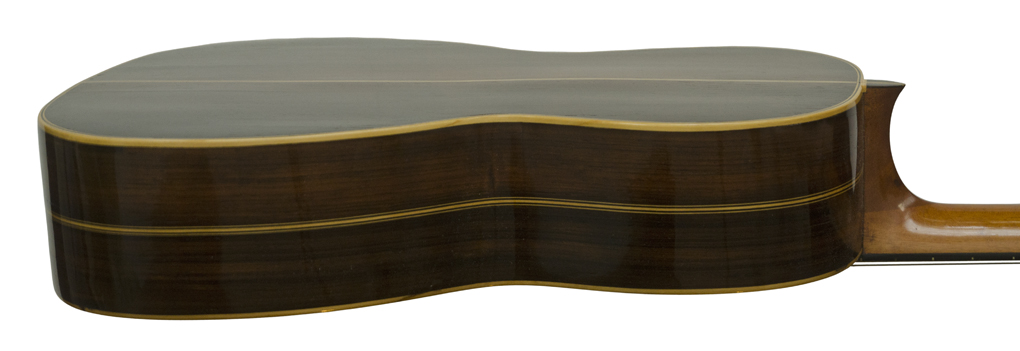


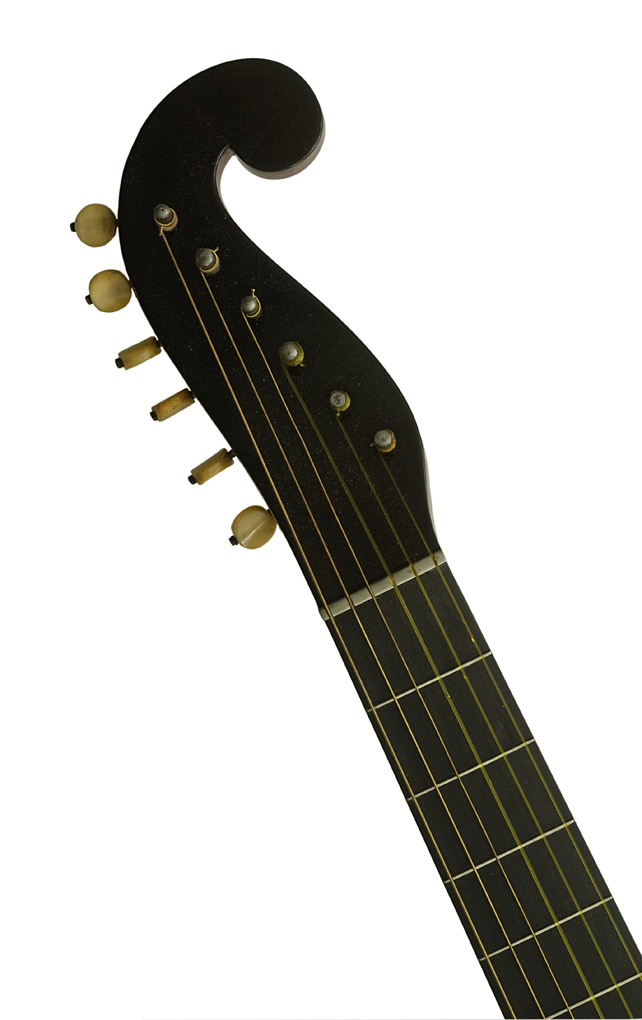
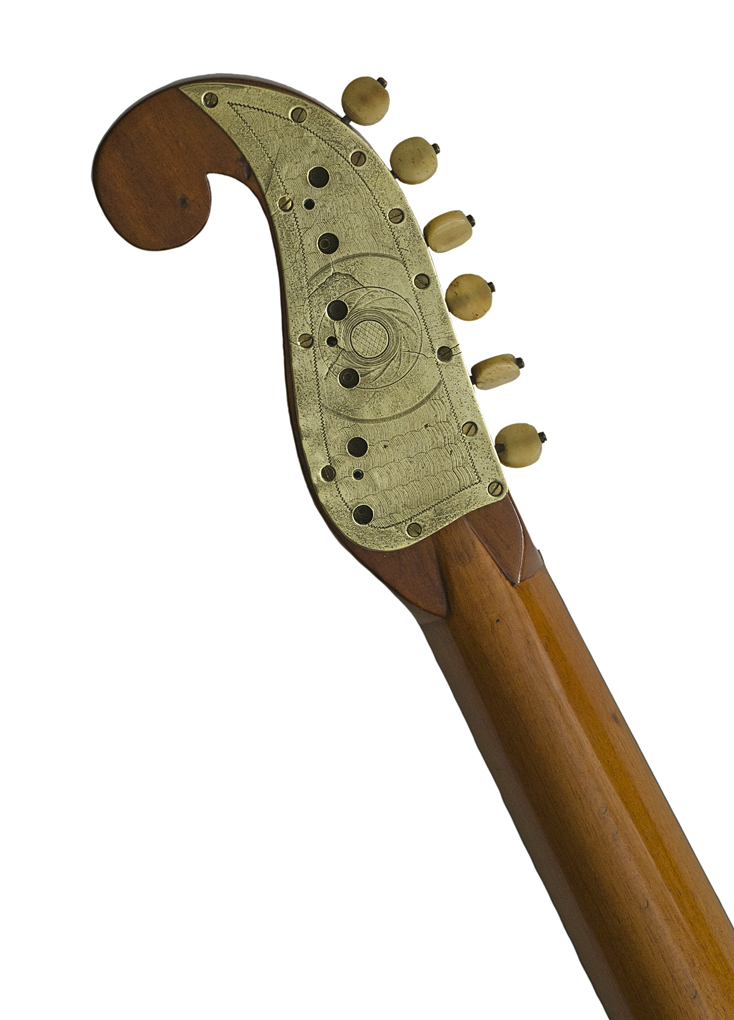
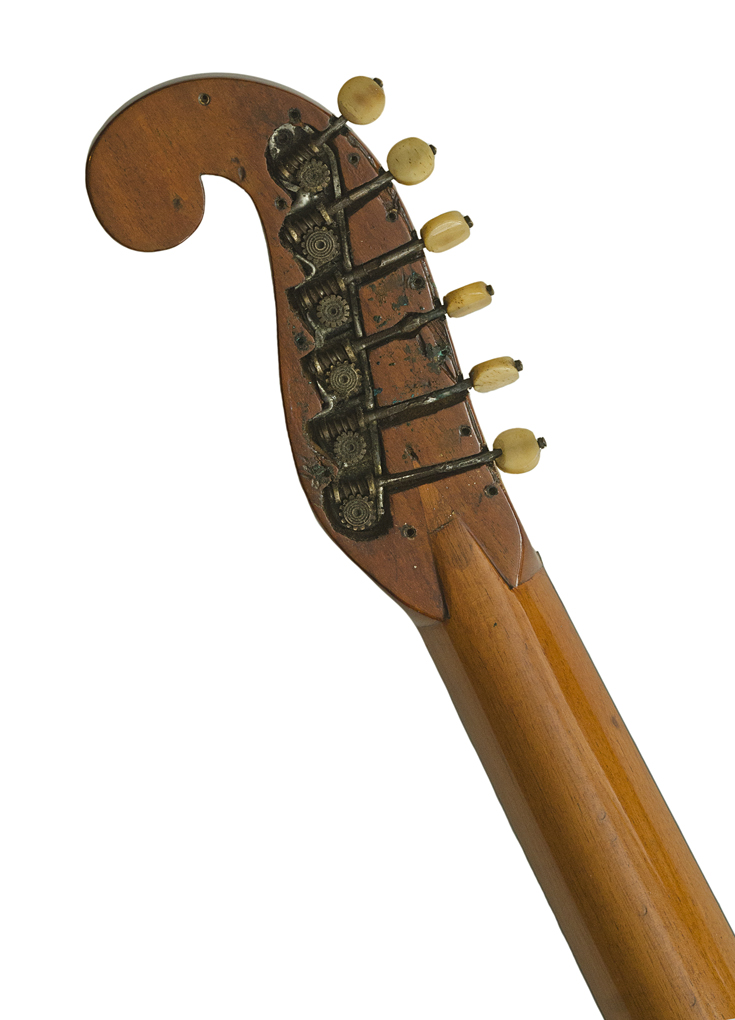
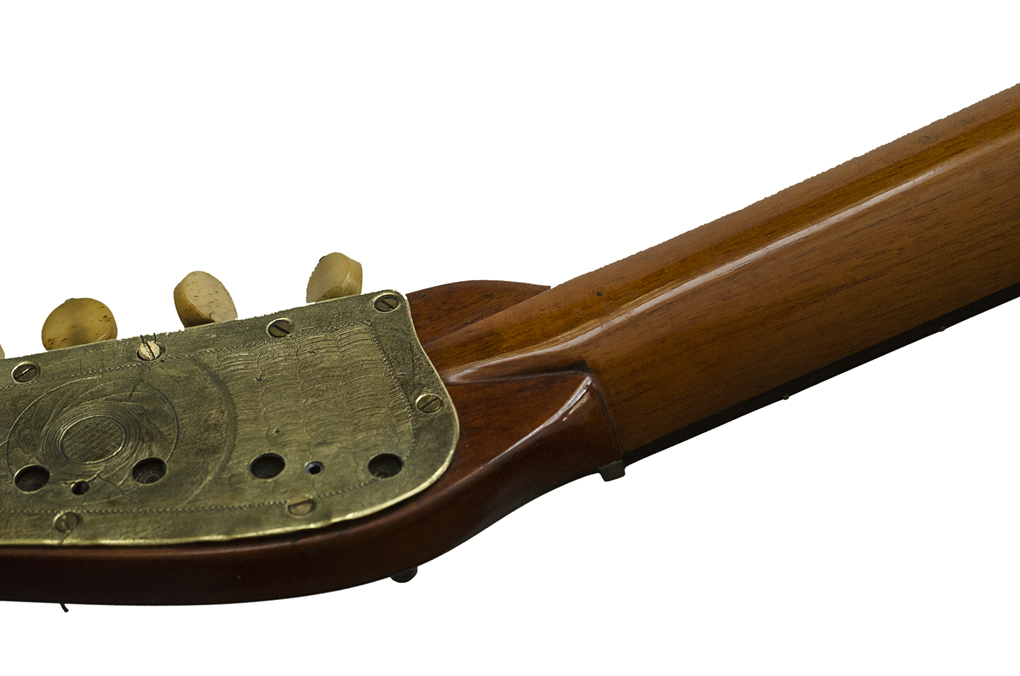
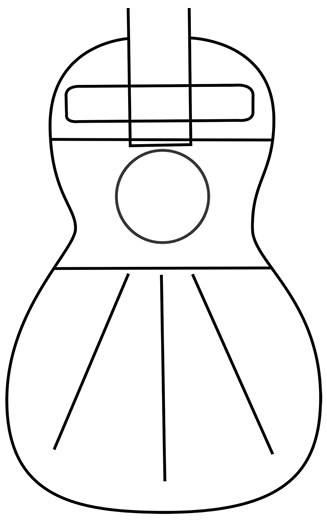
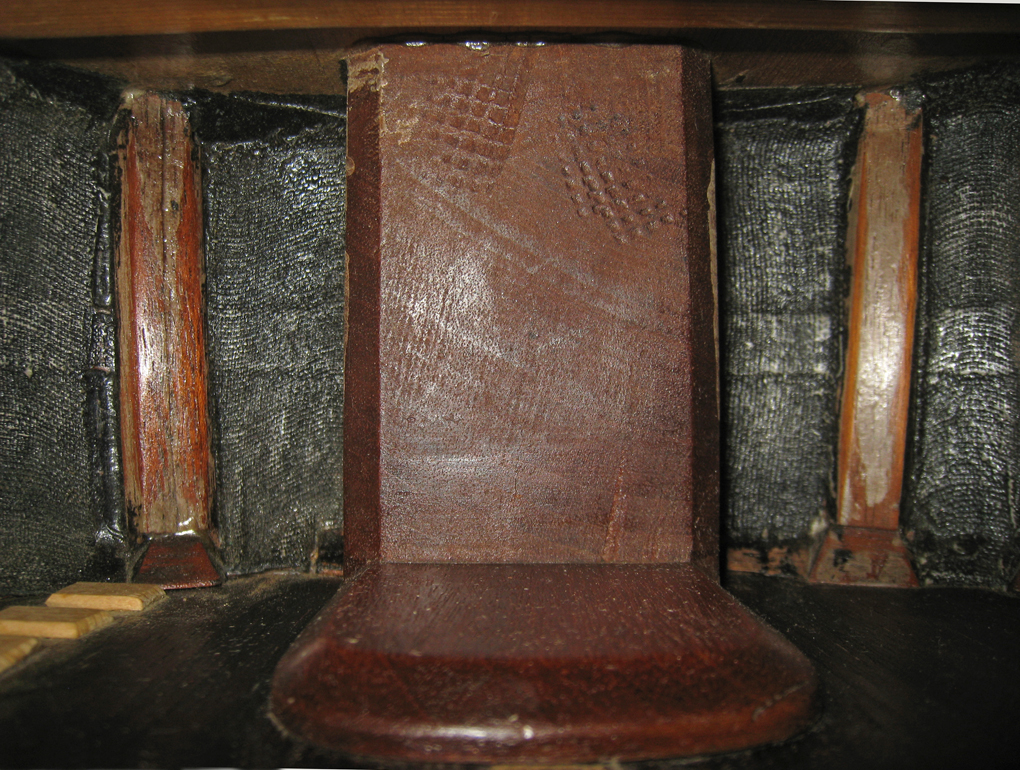
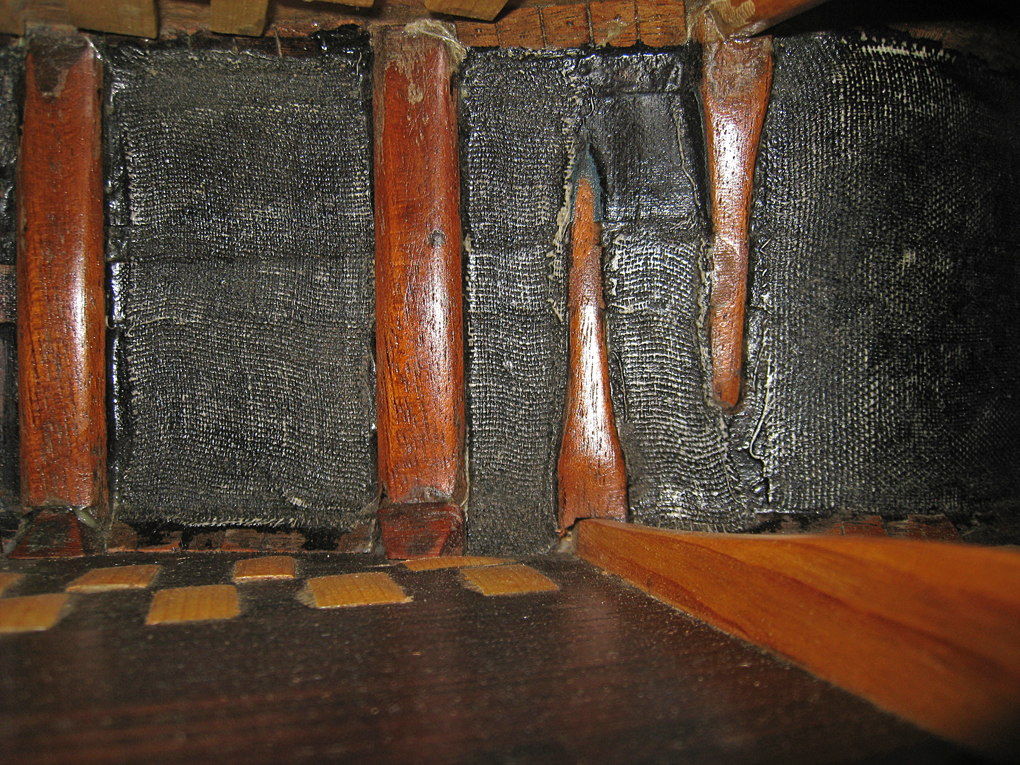
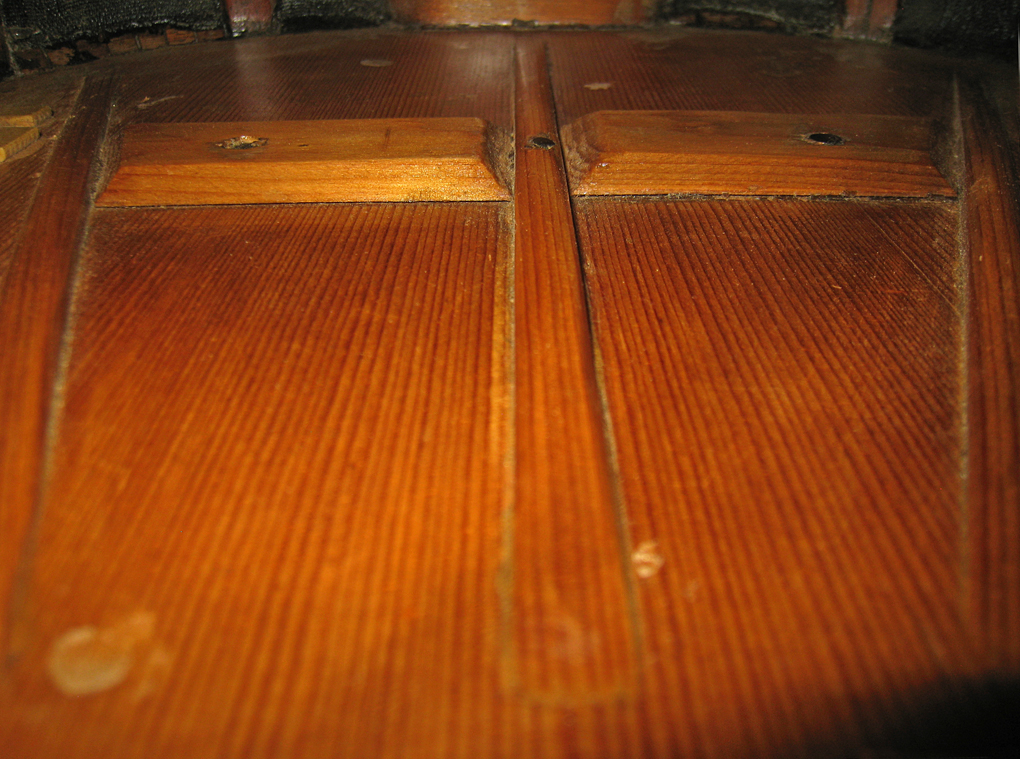
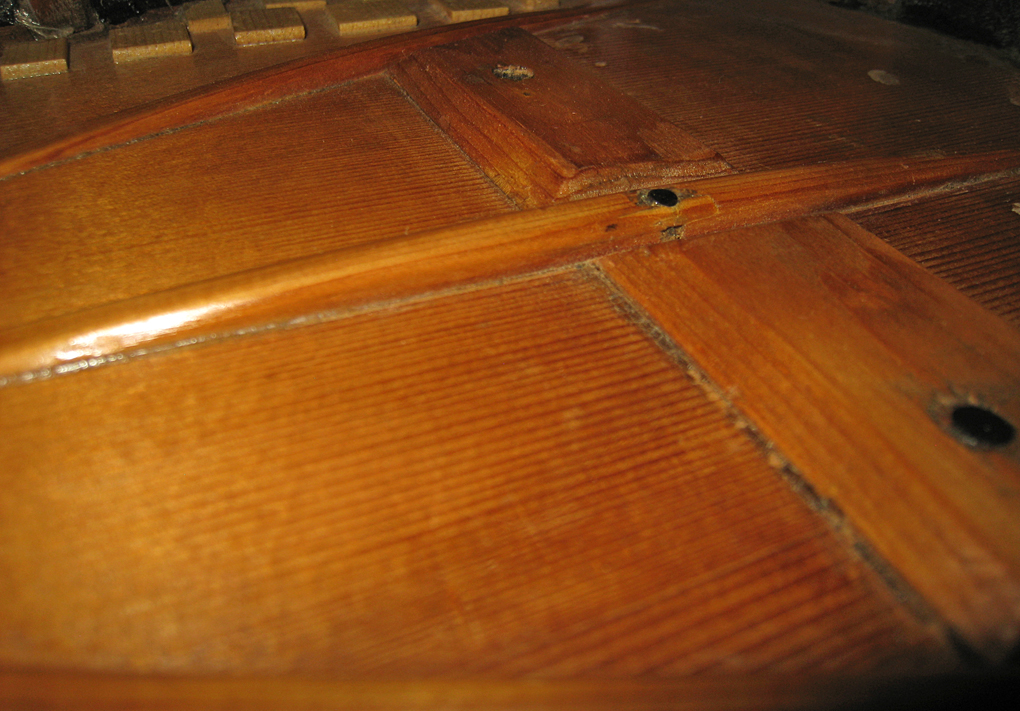
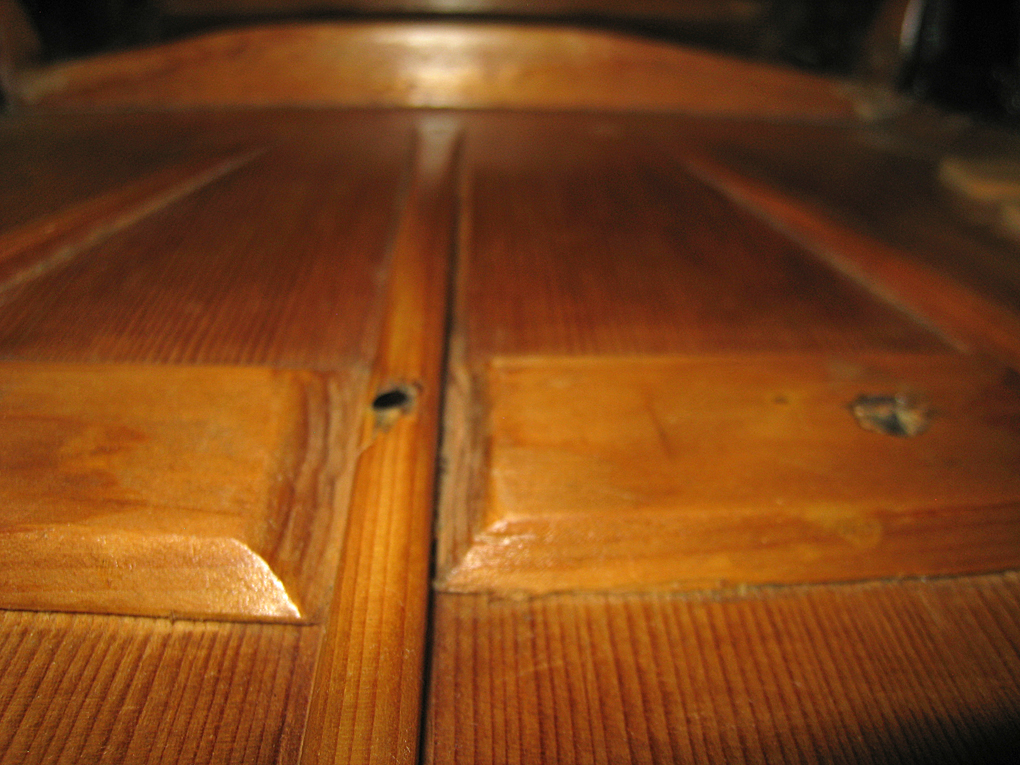
Illustrated in Washburn & Johnston, "Martin Guitars: An Illustrated Celebration of America's Premier Guitarmaker":
"The most interesting parts of this Martin & Coupa are what you can't see. The neck has a Spanish-shaped heel, with the sides slotted into a
neck block with an interior "foot". The top is also fan braced, a feature this guitar shares with several other Martin & Coupa instruments. Other small
details from this experimental period at Cherry Hill strongly suggest that C.F. Sr. was turning away from Northern European guitar design and
incorporating ideas found on Spanish instruments predating guitarmaker Antonio Torres's guitars.
Washburn & Johnston p 35.
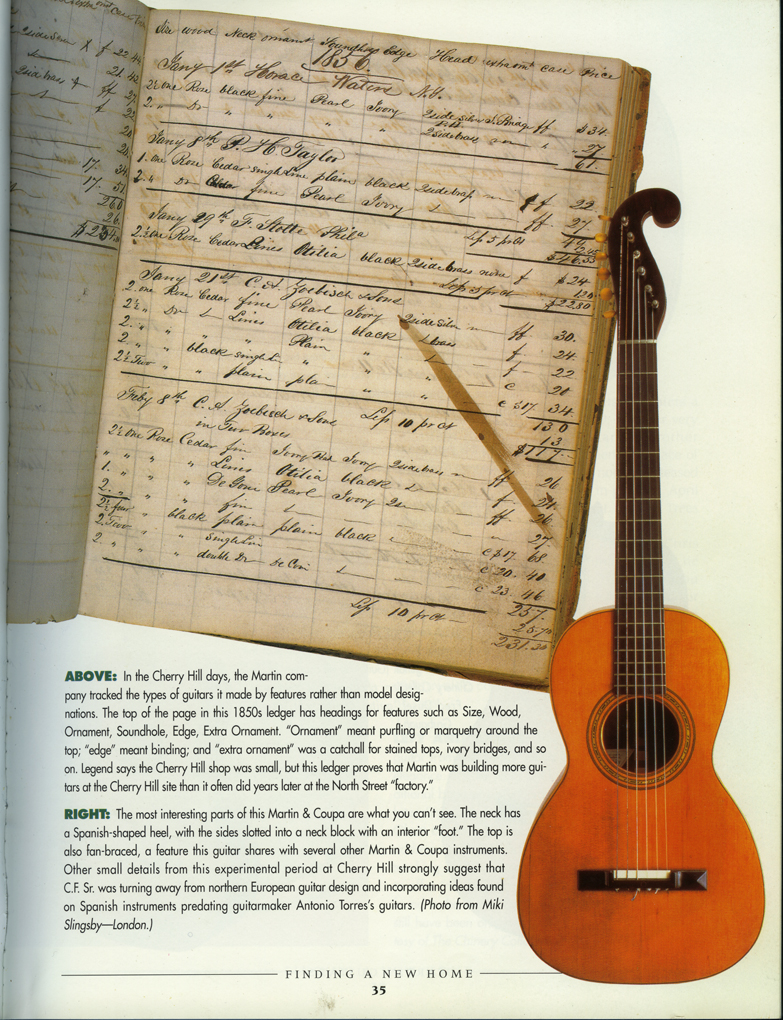
The Steve Howe Guitar Collection pp. 77, 78, 79
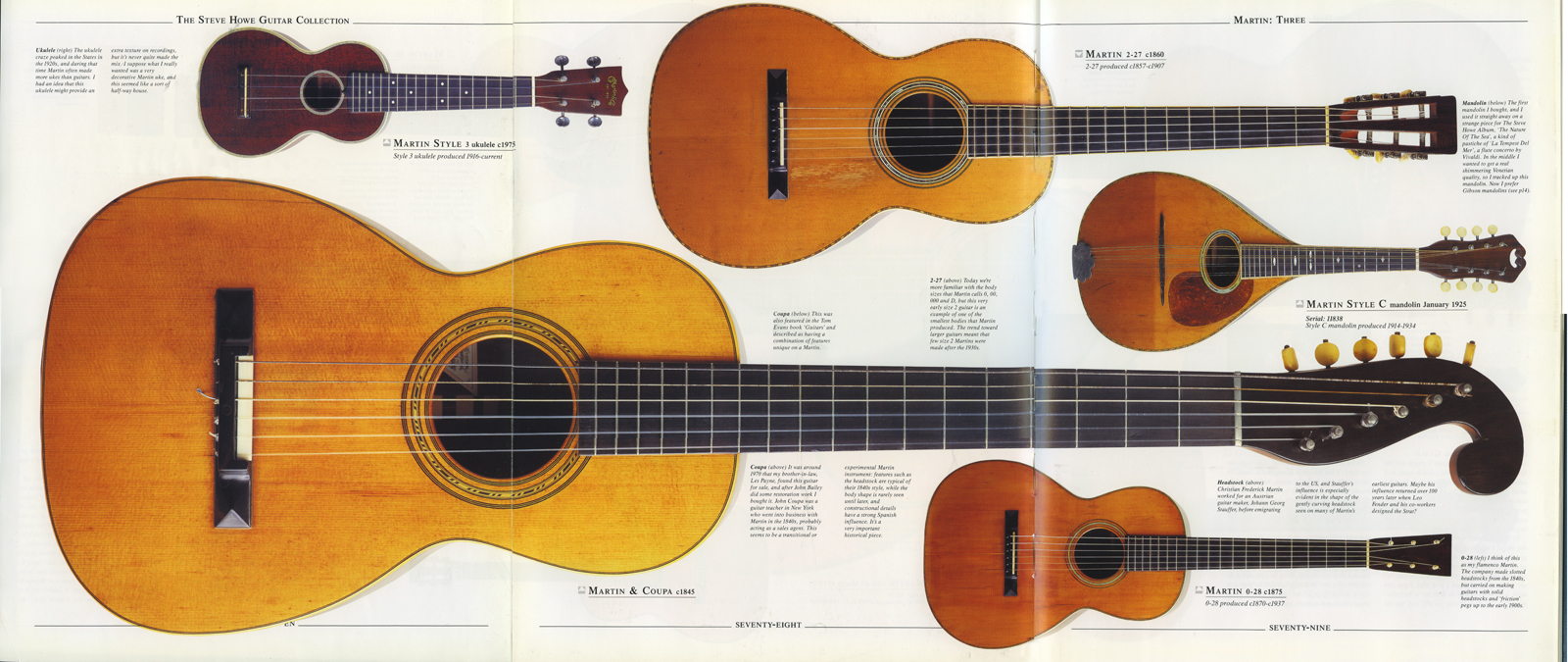
Illustrated in Evans, "Guitars: Music, History, Construction and the Players, from Renaissance to Rock"
While interviews related to a recent museum exhibit of early Martin guitars infers that the "Spanish Connection" is a recent discovery, the
importance of this instrument in illustrating the significance of the influence to C.F. Martin of the "Pre-Torres' guitars of Cadiz, Spain was clearly
recognized here by Evans, in these words published 46 years ago, in 1977, and reprised in the 1997 writing of Washburn and Johnston:
"This instrument has a combination of features that is, to our knowledge, unique on a Martin guitar. The head design is similar to that used by
Martin in the 1830's, with the tuning machines concealed under a metal plate and buttons on one side, after the manner of Stauffer. The body,
however, does not have the Stauffer-inspired, wasp-waisted shape of the 1830's, but is closer to the mature Martin style of twenty years later.
The shape suggests strongly that Martin had had the opportunity to examine a Spanish-made guitar of about 1840, and was
experimenting with Spanish-style construction."
"This supposition is reinforced by the presence of Spanish features such as we have seen on no other Martin guitar, including simple fan
bracing with three radiating struts, and a Spanish head and slipper foot into which the sides are slotted. The division of the rosewood sides by a
narrow decorative hardwood strip is another feature borrowed from the nineteenth-century Spanish guitars. The presence of this strip weakens
the sides; to give them strength, Martin fitted several vertical braces into which the cross struts of the top and back are notched, framing up the body."
"The design of the bridge is very modern for it's date. In shape it conforms to the "pyramid" bridge pattern used by Martin throughout the latter
half of the nineteenth century and the first quarter of the twentieth. But this is one of the very few nineteenth-century Martin guitars to be made with a
tied rather than a pin bridge. The strings pass over a broad, backward sloping ivory saddle-piece before being secured at the rear of the bridge."
"This guitar proves that C.F. Martin was one of the few makers outside Spain in the early nineteenth century to be aware of the possibility of fan strutting
on the guitar, and that he experimented with it before developing his own famous X-bracing system. It shows the American gut-stringed guitar, the
ancestor of the steel-sting guitar, at a critical point of it's evolution, about to break away from the diverse European influences to which it owed it's beginnings."
Evans pp. 235-236
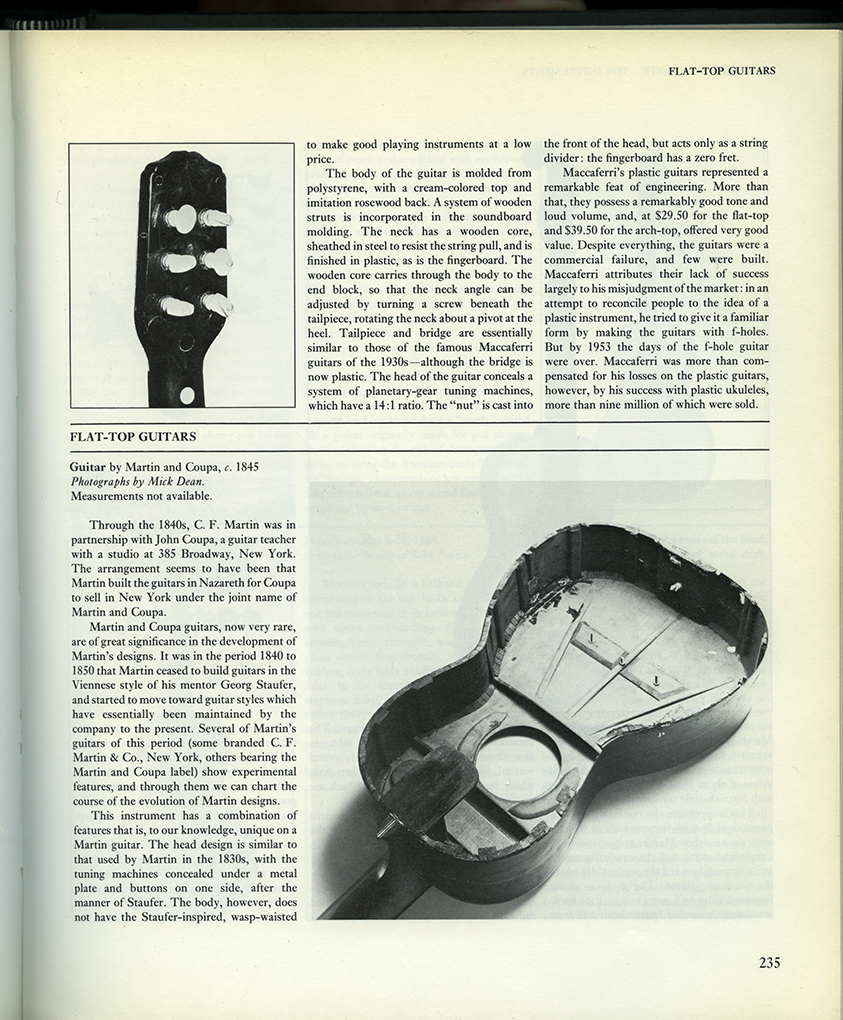
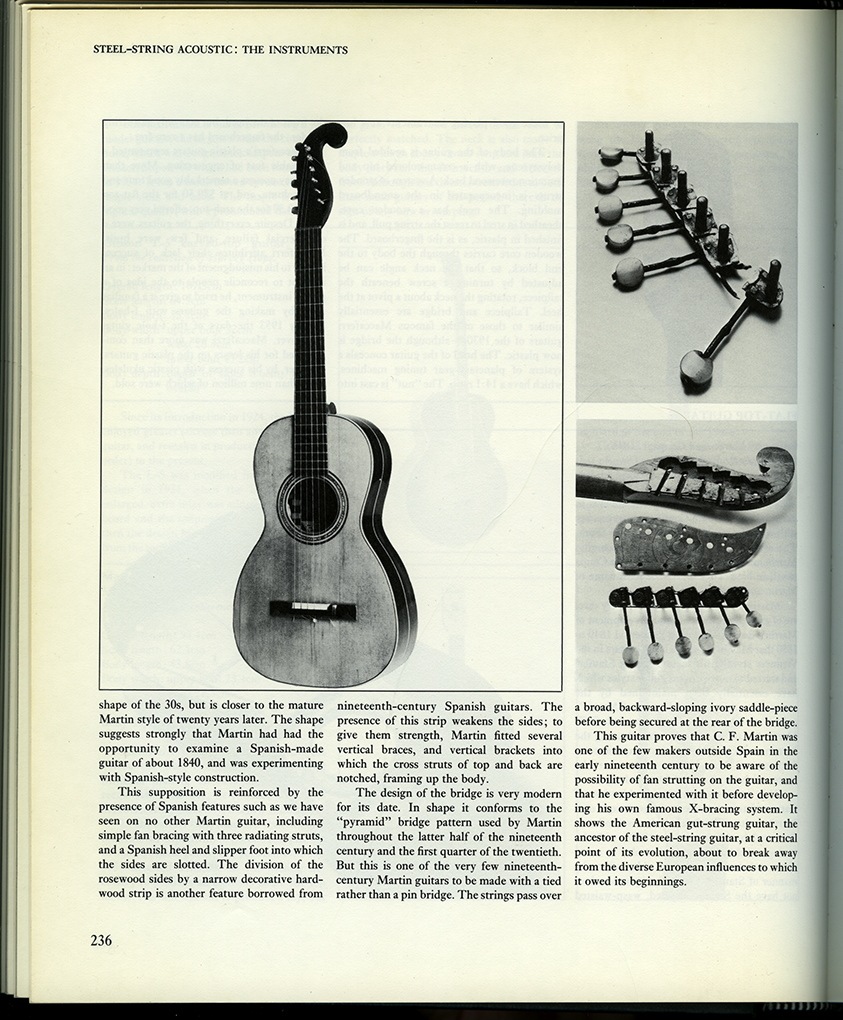
vintagemartin.com
To See Robert Corwin's Classic Photography of Folk and Roots Musicians, visit:
For Information on Photography for
Exhibition, Publication, CD's, Promotion, Web Pages, Tour Books,
to Purchase Photographic Prints, or
If You Have Questions or Suggestions About This Web Site or Vintage Martin Guitars:
e-mail: Robert Corwinentire site copyright ©1998 through 2016 Robert Corwin/Photo-Arts. All rights reserved.